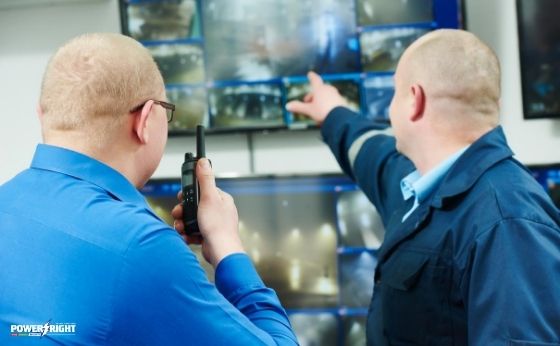
When you own a business, you cannot stand the idea of losing your assets. Here is why your number one priority should be business security. Implementing any of the video surveillance systems might be one of the measures a responsible entrepreneur has to consider. Nowadays we can see surveillance cameras almost everywhere: in the shops, banks, streets and we even have them at home.
CCTV system (short for closed-circuit television) means the strategic placement of video cameras to transmit the signal to a specific place. Such systems allow to monitor the activity of employees and customers, generate alerts, transmit and store the recordings.
Right now there are two main types of CCTV systems –HD (analog) and IP (digital). HD cameras require a cable connection to DVR and are usually lower resolution than the IP technology.
IP cameras are higher resolution. They generate clearer images, and consequently, they require more storage space. Additionally, IP cameras can have many features (digital zoom, object recognition, auto-recording, connection to authorities, notification).
If you are updating your old system and do not want to give up your analog cameras, you can implement a hybrid video recorders (HVR) surveillance systems. HVR runs both IP cameras and analog cameras.
There are many different types of security cameras on the market, and depending on your security needs, you may consider using one of the following:
Obviously, to enhance your business security. Video surveillance systems not only deter thieves and make sure law enforcement can quickly catch a criminal, but also help you monitor the work of your employees, improve their productivity, and even reduce your insurance fees.
Installing and maintaining a CCTV system may aid you to:
Deter employee theft and shoplifting. CCTV systems can prevent a variety of crimes in the workplace as well as shoplifting, which could be a costly problem for some businesses.
Deter burglary and vandalism. Nobody wants to be caught on camera while committing a crime, so CCTV cameras could be a powerful tool in preventing break-ins and vandalism.
Gather and store evidence if a crime does occur. If any of the cases mentioned above do occur, you will have the evidence to identify the criminal.
Combat COVID-19. One of the latest solutions for pandemic prevention and control is using thermal screening surveillance systems in airports, railway stations, hospitals, schools, and other sites. Moreover, businesses provide police with their recorded footage to track people.
There are some benefits of video surveillance technology, including the savings that can come from crime prevention. Moreover, CCTV system provides peace of mind and helps to enhance business security. Such surveilling systems also help to make your employees feel safer. Furthermore, integrated security systems are effective crime deterrents and also is one of the tools used for the COVID-19 pandemic prevention and control.